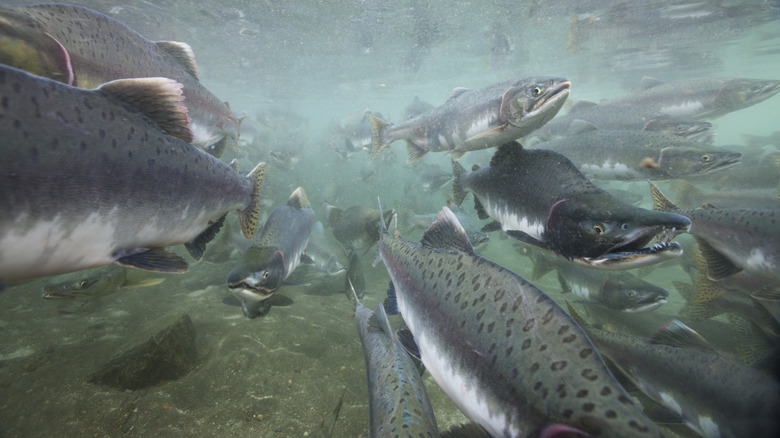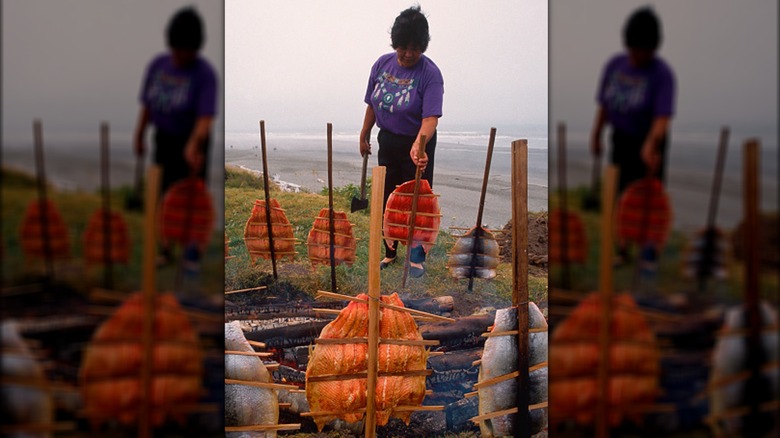The Rich Fish Crucial To Indigenous Culture In The Pacific Northwest
The fact that salmon is the second most popular seafood in the United States is no surprise to those who enjoy it. Rich, meaty, and full of both flavor and nutrients, salmon can be prepared in so many different ways, from raw for sushi to smoked filets and lox. While you may like to eat it regularly, salmon has been a vital part of not just the diets but also the lives of Indigenous cultures in the Pacific Northwest for thousands of years, so much so that the Native Nations in this area consider themselves to be the Salmon People.
When salmon spawn in the Pacific Northwestern portion of the country, they travel through three areas where Native Americans have called home for millennia: the Pacific coast, Puget Sound, and up the Columbia River. Additionally, the Columbia River Basin flows through Oregon and up to Canada. Because these fish spawn annually, salmon naturally became an important resource for whoever resided in these locales. And, according to Indigenous tribes, salmon doesn't just feed the people, it feeds the land itself. As they spawn, the fish bring rich ocean minerals to the freshwater rivers and even nourish the vegetation when they die and put their own nutrients into the soil. Indeed, many tribes consider salmon to be sacred, and it all starts with the very beginning — with creation.
Salmon is so much more than a food source
According to certain Indigenous tribe's beliefs, when the Creator made the earth and all that is in it, he asked animals and plants for volunteers to nourish mankind — salmon stepped up first and, because of this, it is held in high regard and is respected by several tribal communities. Pacific Northwest native nations hold ceremonies and festivals every year in reverence of salmon and have been doing so for generations.
Researchers estimate that, up until the mid 20th century, some tribes in this part of the country consumed nearly a pound of salmon per person, per day. Currently, the fish is also used in religious ceremonies, is an important part of commerce, sustains the lives of fishermen, and is even an indicator of the health of the rest of the region. For instance, when salmon numbers decline, natives understand that the flora and fauna may decline as well. When salmon can't nourish the plant life, food sources like berries and edible plants won't grow as well. As a result, wildlife like deer won't come to eat said plants, thus, affecting the food source of the people. In essence, salmon affects the entire cycle of life.
In these ways, salmon is of the utmost importance — it just might be nature's perfect fish. Of the seven types of salmon species, five of them can be found in the Pacific Northwest region: Chinook, Coho, Chum, Pink, and Sockeye. The remaining two, Masu and Amago, are generally found in Asia.

